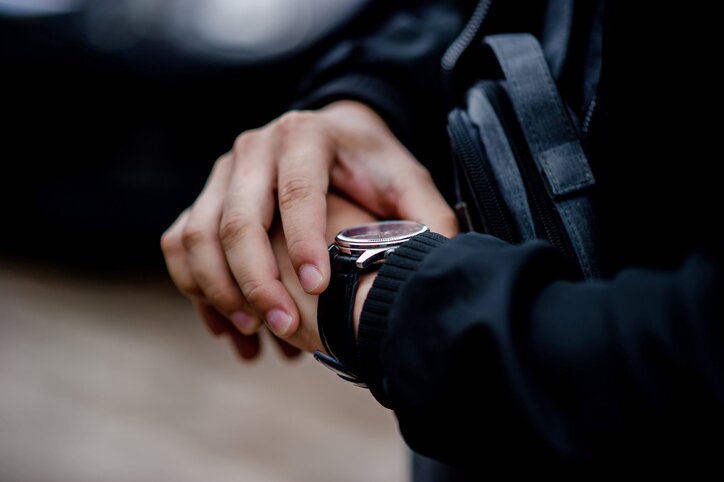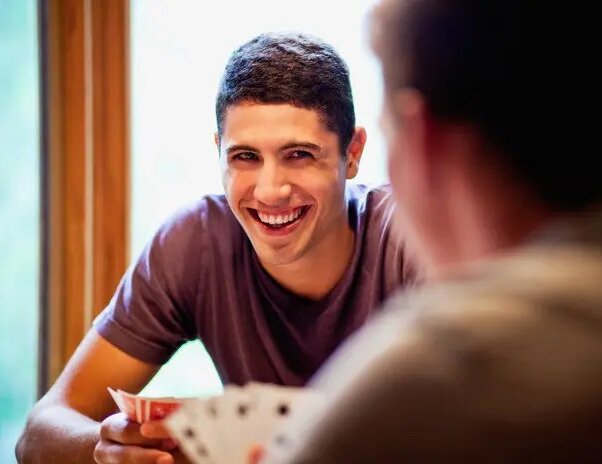Poker is part luck, part skill, and part being able to read your opponents. Picking up on poker tells – certain patterns that opponents are consistently doing when they have specific cards – can help you determine what the right play is.
Do they adjust their hat when they’re bluffing? Do they draw out their decisions when they’re holding serious cards? Is there something in their body language or facial expressions that you can pick up on?
While the majority of casual players believe that looking into tells is something that only professionals do, discerning poker patterns is important even if you’re just a casual player. Most of it is basic observation, though casual players ignore it by focusing on their own hands.
With that in mind, here’s a look at some of the different types of patterns to pick up on.
Track the Timing of Your Opponents
When playing poker, timing tells is one of the most important areas to master. The more you play, the better of a feel for the game you’ll have.
The easiest tell is when a player gambles very aggressively or very passively. You can normally tell if an opponent hesitates before raising the stakes that they might not be so sure of their hand. Of course, it could be a bluff but a sharp eye will be able to discern the difference.

While this aspect is very hard to pick out when you’re playing online, after playing multiple hands with the same opponents, you can start to realize how long they take before making a decision. Use that to your advantage when playing. This type of pattern comes from watching a player play about a hundred hands.
The key is to be engaged in each hand – even if you fold. That way you can track, monitor, and see how your opponents are playing when they win and when they lose.
How Frequently Do They Look at Their Cards?
This is one of the easiest patterns to recognize when playing poker. Lookers are the people that continuously check their cards before it is their turn. In almost every hand of poker, there is normally a player that checks their cards. For most, it’s a force of habit. However, for some, it might be a tell.

Do they look at their cards more frequently when they end up with something good? Do they only take one quick peek when they’re holding something weak? Take note of how they perform when going in and when they toss the cards away. It’ll give you an edge when you’re going head-to-head with them.
Non-verbal and Verbal Communication
Another easy type of pattern to pick up on is verbal and nonverbal communication. This is basically looking at your opponent’s personality and what tells that can give off. For example, if a player is frequently happy and talkative throughout hands, but then suddenly becomes closed off. You can start to realize that their style of play is going to be changed.

A common phrase that these types of players can be caught saying is “that is the best hand I’ve seen all day.” However, some players are able to use this pattern and flip it on its head, to bluff opponents. They fake their emotions in order to throw off their competition and it’s up to you to dissect what’s real and what’s not. For the most part, though, casual players will not be able to hide their emotions – especially when they are having a hard time. That’s where you come in to pick up on it.
How Big Are They Betting?
If you love poker, then learning about bet sizing is a must for you to succeed. It’s also important for spotting poker patterns. In terms of tells, it is very important to note how confident players are when making a bet size or how unsure they are about doing so.
For example, if a friend of yours always bets small but then unexpectedly bets big, you can surmise that there is something different about his current hand. That information could end up being very vital to you throughout that hand. Other people prefer to bet big on most occasions and then mix it up and bet small in order to throw people off their game.
Another example of bet sizing is when a player hesitates before choosing not to increase the bet size on their turn. For example, they raised pre-flop but then hesitated after the flop. This can show a level of weakness and fear. All you would need to do is raise the bet to counteract this.

All of these situations have the ability to be picked up on after a decent amount of playing time together. This pattern is crucial to many poker players around the world and it is even more important when playing online. You should be able to generate a decent amount of understanding about an opponent bet sizing after watching a few hands.
Smaller Miscellaneous Patterns to Pick Up On
Some players decide to bet the flop consistently every single time without fail. If that player were to check randomly, it would be wise to be careful the rest of the game as that could be a sign of a huge hand.
There are players that prefer to bet the minimum multiple times before betting big. This happens frequently in limped pots when a certain draw doesn’t connect. The players that use this method usually bet the minimum in order to bluff their opponents before their big bet once they miss the draw.
Lastly, if a player checks and calls, then suddenly bets into you, this is known as a blocking bet. Commonly, the player picked up what they needed and are looking to draw free of charge. One of the best ways to handle this is to charge them more to draw.
Look for Other Telltale Signs That Help You Succeed
If you want to get a leg up on your opponents, you have to be able to read them. Always keep an eye on the situation around you. You never know the type of patterns you’ll be able to detect.
One tip is to wait before looking at your cards. Instead, scan the table while other players see their cards for the first time. This is a time poker players assume others are focusing on their cards, so it’s a good time to pick up on their reaction. Just remember they’ll be scanning the table when you belatedly see your cards, so don’t betray any poker patterns yourself.
Having the ability to constantly observe the players around you while maintaining your composure is a wonderful skill to have when playing. Little things such as emotions, how a player handles getting big hands, how a player folds, and how a player bets can give you a read on what’s happening.
